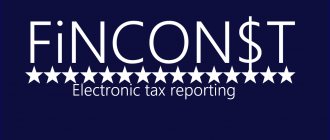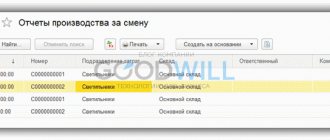Using the EGAIS system, state supervisory authorities control the production, movement, and sale of all alcohol in the country. But even with this situation, about a third of the products sold on this market are counterfeit. Before the introduction of this system, more than 50% of goods were illegal.
Before understanding how control is carried out, what it gives to entrepreneurs, buyers and government regulatory authorities, let’s look at how “EGAIS for alcohol” stands for.
EGAIS is a unified state automated information system. Until 2020, it was used only to track strong alcoholic beverages imported and produced in Russia. Only from the beginning of 2020, beer factories, as well as all distributors of any alcohol, joined it.
We will select a POS computer to work in EGAIS. We will deliver anywhere in the Russian Federation!
Leave a request and receive a consultation within 5 minutes.
Accounting for alcoholic beverages in EGAIS: legal requirements
All retail enterprises whose assortment includes alcoholic products were required to connect to EGAIS before the beginning of 2020 and transmit all information about wholesale purchases of such goods. And already from July of the same year, the state had to know about every bottle of strong alcohol sold. All these requirements were voiced back in July 2020 in Federal Law No. 182-FZ.
Also, this document made adjustments to No. 171-FZ (came into force in November 1995) and obligated, from March 31, 2020, to sell any alcohol (including beer) only when using online cash registers.
But in July 2020, new changes came into force, and sellers of beer, cider and other drinks with low alcohol content on PSN and UTII received a deferment for the installation of cash register until the second half of 2020. Individual entrepreneurs on “imputed” and patent without hired staff allowed to postpone the mandatory deadline installation of cash register equipment at the beginning of the second half of 2020.
From July 2020, even if you use one of the special tax regimes (imputed tax, patent) or have another benefit when installing a cash register, the presence of any alcohol in the assortment of your enterprise will cancel it (the benefit). But in EGAIS you only need to register all deliveries.
For public catering outlets and stores selling beer drinks and beer, connection to the system is not required when working with end consumers.
Subscribe to our channel in Yandex Zen - Online Cashier! Be the first to receive the hottest news and life hacks!
EGAIS, alcohol and catering: frequently asked questions
- Information about balances in EGAIS public catering must be submitted in a similar way in the case of a fight, theft or theft of products.
- In case of partial return of products, it is necessary to draw up a discrepancy report in the accounting system.
- It should also be remembered that, according to the law, a computer with UTM to work in Unified State Automated Information System must be located at the point of receipt of products, and the retail sales register must be located in the establishment itself. Where the accounting department itself is located is not important.
CATALOG OF EQUIPMENT AND NEW ONLINE CARDS
You can follow us on social networks to receive information as quickly as possible.
Did you like the article? Share it on social networks.
Did you like the article? Share it on social networks.
Add a comment Cancel reply
Also read:
Re-registration of the cash register in connection with the replacement of the FN
Re-registration of the cash register in connection with the replacement of the FN is a prerequisite for correctly sending data to the tax service.
According to the new legislative norms of Federal Law-54, each cash register must contain a special chip - a fiscal drive, which replaces the previously used EKLZ. Its functions include recording transactions performed on cash register equipment, checking their authenticity, encrypting and transferring FD to the operator. As a rule, to re-register a cash register… 616 Find out more
Review of programs and accounting systems for shoe labeling
From July 1, 2020, the production and trade of unmarked footwear is prohibited.
Remains purchased or manufactured earlier are marked until September 1. To fully embrace innovations, entrepreneurs need not only to register in the Chestny ZNAK system, but also to install the appropriate software. We present reviews of the 5 best programs for marking shoes. Registration in shoe labeling with a discount Register in the mandatory shoe labeling system with... 672 Find out more
How to install EGAIS: installation instructions
The installation of EGAIS is required for participants in the circulation of alcoholic products in order to work in accordance with the requirements of the law (RF Decree No. 1459 of December 29, 2015).
The unified system is designed to control the movement of each unit of alcohol-containing goods - from the manufacturer to the end consumer. Participants in the turnover are organizations (manufacturers), agricultural producers, individual entrepreneurs (engaged in the sale of alcoholic beverages), and federal executive authorities. The goal of the Unified State Automated Information System is to rid the market of counterfeit alcohol. Registration and installation of EGAIS... 601 Find out more
How does EGAIS work?
First of all, the system was created in order to check the legality of products purchased by large suppliers and small stores. Therefore, alcohol is introduced into the system during its production or import into Russia.
- Importers and manufacturers of alcoholic beverages mark them with unique barcodes that contain all the information about the product: manufacturer, composition, date and time of manufacture, shelf life, etc.
- At each stage of wholesale sales (shipment to large suppliers, sale to retail chains, etc.), the selling company issues invoices in the name of the buyer, which are also duplicated in Unified State Automated Information System.
- The buyer checks the received goods with those listed in the invoices in a unified system. If the information matches, the recipient confirms that he accepted the batch of alcohol.
The sale of goods to the final buyer is recorded in a special UTM (universal transport module) and is automatically transferred to the Unified State Automated Information System.
1. Ask our specialist a question at the end of the article. 2. Get detailed advice and a full description of the nuances! 3. Or find a ready-made answer in the comments of our readers.
EGAIS 3.0 in catering 2020
From January 1, 2020, an additional check will be introduced when recording acts of writing off alcoholic beverages from both registers of balances in the Unified State Automated Information System. First of all, this will affect public catering, because... Previously, public catering wrote off sold alcoholic products using a write-off act, without using a 2D scanner for Unified State Automated Information System
The new version of EGAIS 3.0 provides for the mandatory indication of data on bar codes with FSM/AM, which are used to mark alcoholic products when confirming the TTN in EGAIS and in the write-off act for catering. Starting in 2018, the software for EGAIS will have a field in which you will need to indicate the barcode of the excise stamp pasted on the bottle being written off. Catering establishments will be required to scan all alcohol sold per day. This should happen regularly. Unlike stores, catering can provide this data in one document per shift.
Time frame for transition to the new version of EGAIS 3.0 in 2020
- From 01/15/2018 - placement on the balance sheet and acts of write-off of alcoholic beverages marked “retail sales”
- The test period for the blotted acceptance of TTN in the Unified State Automated Information System is until 02/01/2018
- Transition period from 02/01/2018 to 07/01/2018 - there can be TTNs with or without blotted accounting.
- From July 1, 2018, all organizations are required to switch to mark-up accounting when accepting and writing off products.
How does public catering manage balances in EGAIS now?
Today, each organization in the EGAIS system has 2 registers - this is register No. 1 - warehouse and register No. 2 - sales floor.
When the invoices are confirmed, all products are automatically sent to the warehouse.
Next, a document for moving from the warehouse to the sales floor is generated. After updating the balances of the trading floor (some time after the transfer of products from register No. 1 to register No. 2) according to the rules of the Unified State Automated Information System, write-off acts are generated in public catering.
It is important that catering services should be written off to EGAIS regularly. If reports are not sent for a long time, this may serve as a reason for inspection by regulatory authorities.
It is recommended that public catering establishments submit data on alcohol to EGAIS once a day, and not every time the container is opened or sold.
In simple terms, all remaining alcoholic beverages in cafes, restaurants, canteens and other catering establishments must be displayed in the system. In the EGAIS database, catering remains must be taken into account and correspond to real volumes. This is only possible by writing off in the Unified State Automated Information System, public catering, and when generating write-off acts, “sale of products” is indicated as the basis. The date of such a report, according to legal requirements, must coincide with the date of sale, or with the opening of the product container.
Write-off is not required if we are talking about:
- beer and beer drinks;
- cider;
- mead;
- Poiret.
The formation of write-off acts for these types of products is advisory in nature.
It is worth noting that the register of retail sales of alcoholic beverages, beer and beer drinks is mandatory for all types of organizations and for all types of products.
How do you plan to keep track of catering balances in 2018?
Rosalkogolregulirovanie has developed a methodology for the registration of strong alcohol in the Unified State Automated Information System.
Now this methodology is being finalized through discussion with expert organizations and representatives of the alcohol market. You can find the latest current version 2.2 on our website.
The TTN will necessarily indicate all the brands brought by the supplier. If the selling network confirms the TTN, then it confirms the receipt of each specific brand of labeled alcohol.
From a technical point of view, this will happen as follows. Currently there are two registers in EGAIS. Products are located either on one or the other register. In the new version, the second register for labeled alcoholic products will not exist; it will remain only for non-labeled products - beer, cider, etc.
For brand accounting, a third register is being introduced, in which products will be stored by brand. This register will complement the first one. That is, the same products will be on both the first and third registers. On the first - in terms of batches, and on the third - in terms of barcodes.
In this case, the total number in the first and third registers should converge. If products are listed on the first register, but not on the third, this situation must be corrected within 30 calendar days. Otherwise, the entire batch of such products will be blocked and will not be available for sale. This only applies to alcohol that arrived in the dark. Alcohol that was taken in batches may not be displayed on register No. 3.
Key points of the new methodology:
- Blot accounting in the EGAIS system involves tracking the movement of each unit of labeled alcoholic beverages.
- For this purpose, the information contained in the excise stamp is used (bar code in PDF-417 format)
- To maintain scratch records, balance register No. 3 is introduced. Register No. 3 is maintained separately for each fsrar id.
- In 2020, it is planned to change the appearance of brands applied to alcohol products
For public catering organizations and others, when opening containers, the issue of writing off transactions is relevant. Products that the organization previously accepted in batches can be written off from the first register without indicating the excise stamp, but you will need to indicate certificate numbers 1 and 2.
It is no longer possible to write off marked products from the second register. The second register will only exist for beer and other unlabeled alcoholic beverages.
All transactions for writing off and adding to the balance sheet must be carried out with an indication of the excise stamp, even for those products that came to you in batches. Control of discrepancies between batches and excise stamps will be enabled.
If a stamp is sold at the checkout that was not listed in the receipt according to the Unified State Automated Information System, you will need to look for where the discrepancy comes from. If this discrepancy is not found within 30 days, the entire batch of products may be blocked for sale. This means you need to check every bottle.
What does a catering industry need to connect and work in EGAIS?
To connect to EGAIS catering you need:
- personal computer or laptop with Internet access;
- cash register equipment compatible with EGAIS;
- UTM (universal transport module) for exchanging information with EGAIS;
- a program for interaction with UTM - an accounting system where all product movements are carried out - from the acceptance of technical specifications from suppliers to the formation of balances in Unified State Automated Information System;
- JaCarta crypto key for generating a CEP (qualified electronic signature);
- 2D barcode scanner to meet the requirements of the 3rd version of EGAIS documents.
EGAIS, alcohol and catering: frequently asked questions
Information about balances in EGAIS public catering must be submitted in a similar way in the case of a fight, theft or theft of products.
In case of partial return of products, it is necessary to draw up a discrepancy report in the accounting system.
It should also be remembered that, according to the law, a computer with UTM to work in Unified State Automated Information System must be located at the point of receipt of products, and the retail sales register must be located in the establishment itself. Where the accounting department itself is located is not important.
General issues
Why can't you write off alcohol without a scanner?
From January 15, the presence of the stamp will be monitored in write-off acts during sales. If it is not available, RAR will send a refusal. That is, for public catering, the same rules for controlling duplicates will apply as for retail. Note! The new requirements are not dependent on revolutions. This means that absolutely everyone, even the smallest sales points, will have to acquire a scanner.
Will I need to scan the goods upon acceptance?
From July 1, products will be entered into invoices by marking , and in electronic documents, each item will have its own code. However, there is no requirement to scan the invoice. Although PAP recommends checking the batch in this way upon acceptance.
What products are subject to the requirement?
Only for strong alcohol. If a store sells beer and similar drinks (cider, mead, poire), then nothing will change for it in terms of scanning.
Accounting and reporting issues
Is it necessary to submit an alcohol declaration once a quarter in 2020, as before? FSRAR was going to cancel the declaration.
Yes, as long as order is maintained. Most likely, reporting will be canceled in 2020.
Should there be a correspondence of data between the declaration sent to the RAR, the actual balances and information in the Unified State Automated Information System?
As for catering, there will be no compliance. The fact is that in the declaration, sales are reflected in portions, while in the Unified State Automated Information System the entire bottle is taken into account at once. Therefore, the lack of an exact correspondence between the specified data among catering enterprises is the norm.
Should the data in the sales journal and write-off acts in the Unified State Automated Information System (EGAI) be the same?
If we are talking about an electronic sales journal in the EGAIS personal account, then such compliance will be maintained automatically. After all, it is formed on the basis of the data contained in the acts of write-off from the second register. But the sales journal, which is kept on paper or in a commodity accounting system, can be filled out at different times:
- when opening a transport container (box);
- when opening the bottle.
In the first case, discrepancies cannot be avoided. RAR gives the following explanation on this matter: the data of the electronic journal in the Unified State Automated Information System and the “paper” sales journal may not coincide . The journal in your personal account is, in fact, a type of report generated based on information submitted to the Unified State Automated Information System. The priority is always the journal that the seller maintains independently. It must still be completed and, if necessary, submitted for review.
Technical issues
How is the mechanism for protecting against the re-sale of a bottle of alcohol implemented?
If you focus on how it works in retail, the system is like this:
- the cashier reads the data from the stamp;
- they enter the RAR (if there is a connection) and are checked against already available information;
- If a bottle with these parameters was previously sold, a warning will appear stating that it cannot be sold.
If at the time of contacting EGAIS there are communication interruptions, the sale will go through. After the connection is restored, data about it will be transferred to EGAIS, and the fact of re-implementation will emerge. In this case, you will have to figure out why this happened and explain it to Rosalkogolregulirovanie.
In public catering, most likely, it will be a little simpler. If you try to send a write-off report that contains a previously used barcode, EGAIS will refuse . It will be explained that the reason for this is the code already used.
Note! The RAR has not yet confirmed that the protection will be implemented in this way. There is a small chance that a protection mechanism will not be provided at all. This means that when you send the write-off act, there will be no check - the document will go to the Unified State Automated Information System in any case. And in the event of a re-sale, PAP will later report that the previously sold bottle was written off.
Are there any particularities in choosing a scanner? How to connect it?
A 2D scanner that recognizes pdf-417 and datamatrix barcodes is suitable. Connecting a scanner is not a complicated procedure. As a rule, simply connecting it to the cash register is enough. It is worth considering that using a wireless scanner will eliminate a lot of inconvenience when receiving goods.
Will the update require any action from the user?
No, in general, the EGAIS update will occur automatically. If technical problems arise, you will need to update the system manually.
Why can’t I write off an open bottle using FB-*****?
The given code is non-unique - it contains only information about the batch of alcohol. The idea behind the update is to move from tracking the fate of a batch to tracking a specific bottle by its brand.
Special situations
How should nightclubs write off alcohol, given that alcohol is sold in large volumes?
Be that as it may, it is necessary to comply with the requirements of the law. And they are as follows: all bottles opened during the day must be written off by the end of the shift of the next working day.
This can be done in two ways:
- During the day, the bartender marks each open bottle, and at the end of the shift, all marked bottles are written off.
- Before the alcohol is shipped from the warehouse to the club, bottles are scanned and written off. This option is possible in cases where it is clear in advance how much alcohol will be consumed per shift.
Sometimes the question arises about the legitimacy of the second option. Theoretically, inspectors can question it, because the bottles are not opened during the actual sale. But in practice, most often this method does not raise questions - inspectors understand that alcohol sells out very quickly in a nightclub. It is more advisable for clubs to use this method - although it is a little risky, it significantly simplifies the accounting of alcohol.
Note! You cannot use this approach to writing off products in a warehouse! FSRAR will immediately see that the newly received products have been written off. This can be seen by comparing the date of acceptance confirmation and the date of the write-off act, as well as by comparing the product items in these documents. As a result, a fine will follow, since such a write-off violates the rules. After all, quite a lot of time can pass from the receipt of goods to the warehouse to their sale to the consumer.
Why can’t all bottles be scanned and written off at once?
By introducing a new procedure for reflecting data on sales in public catering, PAR incorporated a certain logic into it. It consists in the fact that the bottle must be uncorked at the moment of sale . This is due to the ban on the sale of takeaway alcohol in public catering. Theoretically, of course, you can open and write off all the stocks at once, and then leave them to wait in the wings. But this contradicts the requirements of the RAR. And as mentioned above, the service easily monitors such moments and assigns fines.
Did visitors to the establishment order a whole bottle of alcohol? How to register a sale correctly?
In accordance with Law 171-FZ, alcohol can be served in public catering after opening the bottle. Accordingly, you need to scan and open it at the checkout, and then send the write-off report. Or, as an option, the stamp can be photographed, and after sale, scanned and written off.
What happens if you sell a bottle without scanning it? That is, alcohol was sold to take away.
In this case, this bottle will hang on the remains. There will be a discrepancy between the actual balance and what is listed in the system. This is a violation - you will have to explain it to the RAR. Perhaps they will accommodate you and help you write off the bottle without a fine.
EGAIS system: retail alcohol sales
For retail stores selling alcoholic products, work with EGAIS begins at the time of receipt of supplies:
- When accepting the cargo, the responsible employee must compare the quantity and name of the goods received with the information in the invoice (electronic and paper documents are checked).
- If discrepancies are detected between the goods actually received and the products declared in the invoice, you can refuse delivery or issue an appropriate report.
- After confirmation of acceptance, you need to enter information about the products into the cash register program. When integrating inventory with an online cash register, this happens automatically.
Alcohol sales are carried out according to the following scheme:
- The cashier uses a two-dimensional code scanner to read information from a special stamp.
- When confirming the legality of goods, the information is sent to UTM at the time the receipt is generated.
- Through UTM, the sale of alcohol is registered in EGAIS, and the sold bottle is written off from the balances of the outlet.
After the purchase, the buyer can use the QR code indicated in the fiscal document to check the authenticity of the purchased product.
You may be interested in: How to update UTM EGAIS: detailed instructions
Technical issues
How is the mechanism for protecting against the re-sale of a bottle of alcohol implemented?
If you focus on how it works in retail, the system is like this:
- the cashier reads the data from the stamp;
- they enter the RAR (if there is a connection) and are checked against already available information;
- If a bottle with these parameters was previously sold, a warning will appear stating that it cannot be sold.
If at the time of contacting EGAIS there are communication interruptions, the sale will go through. After the connection is restored, data about it will be transferred to EGAIS, and the fact of re-implementation will emerge. In this case, you will have to figure out why this happened and explain it to Rosalkogolregulirovanie.
In public catering, most likely, it will be a little simpler. If you try to send a write-off report that contains a previously used barcode, EGAIS will refuse. It will be explained that the reason for this is the code already used.
Note! The RAR has not yet confirmed that the protection will be implemented in this way. There is a small chance that a protection mechanism will not be provided at all. This means that when you send the write-off act, there will be no check - the document will go to the Unified State Automated Information System in any case. And in the event of a re-sale, PAP will later report that the previously sold bottle was written off.
Scanning of alcoholic products during sales
Are there any particularities in choosing a scanner? How to connect it?
There are no special features. Any 2D scanner that recognizes pdf-417 and datamatrix barcodes will do.
Connecting a scanner is not a complicated procedure. As a rule, simply connecting it to the cash register is enough.
Will the update require any action from the user?
No, in general, the EGAIS update will occur automatically. If technical problems arise, you will need to update the system manually.
Why can’t I write off an open bottle using FB-*****?
The given code is non-unique - it contains only information about the batch of alcohol. The idea behind the update is to move from tracking the fate of a batch to tracking a specific bottle by its brand .
What is needed to connect to EGAIS
To register the purchase or sale of alcohol-containing goods in the state database, businessmen will need:
- personal computer or laptop and stable Internet connection;
- a qualified digital signature (DS) for each branch of the enterprise or individual division (for private traders, regardless of the number of trading platforms, one signature is enough);
- crypto-key - a special flash drive with a CPU stored on it; it is needed to log into the system and sign documents accompanying batches of alcoholic products;
- UTM - software for automatic transmission of information on the circulation of alcoholic goods;
- a cash register that meets the requirements of 54-FZ (except for the cases specified in Article 2 of this law);
- reader for scanning two-dimensional codes (for working with excise stamps);
- a commodity accounting program that can be integrated with a single database that controls the movement of alcohol-containing goods.
For sellers of beer and beer-based drinks, the list of technical equipment will be somewhat smaller, because they do not need to record the sale of each bottle in the Unified State Automated Information System.
Let's select a 2D scanner to work with EGAIS! Delivery throughout Russia.
Leave a request and receive a consultation within 5 minutes.
Normative base
As of the date of preparation of the journal for publication, most of the regulatory documents defining the functioning of the Unified State Automated Information System existed at the draft stage (they can be found on the official website of Rosalkogolregulirovanie).
We list them below: a) draft Decrees of the Government of the Russian Federation:
- on the functioning of the Unified State Automated Information System;
- requirements for technical means of recording and transmitting information on the volume of production and turnover of alcoholic beverages to the Unified State Automated Information System;
b) draft orders of Rosalkogolregulirovaniya:
- on the list of information submitted to EGAIS;
- on approval of technical conditions in the field of production and circulation of ethyl alcohol, alcoholic and alcohol-containing products in terms of equipping organizations, agricultural producers, individual entrepreneurs with EGAIS software and hardware.
The above documents should be signed in the very near future.











